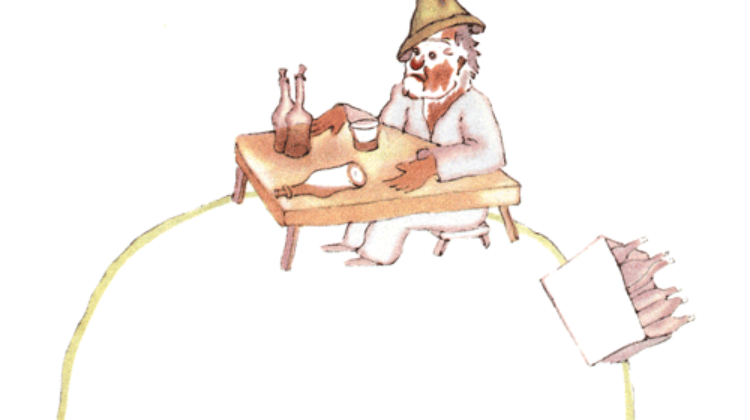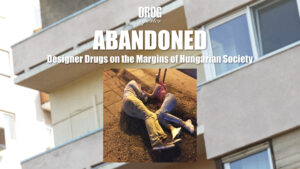Many people know the story of the drunkard from Saint-Exupéry’s Little Prince, who drinks because he is ashamed, and is ashamed because he drinks. This article is about how ancient wisdom and modern science teach us to avoid shaming as a tool to change people.
Euripides, the ancient Greek tragedian, was a master of portraying the passions and torments hidden in the depths of the human soul. One of the central questions of his tragedy, Hippolytus, is how can otherwise rational, and what is more, prudent human beings commit atrocious crimes that are sometimes difficult to comprehend. What is happening in the soul of the sinner before, during, and after committing the crime and how does it receive the punishment imposed by fate. One of her heroines, Phaedra is a married woman who falls in love with Hippolytus, her stepson, the bastard son of her husband, Theseus. When Hippolytus rejects her proposal indignantly, Phaedra, being hurt in her female pride, succumbs to vengefulness. Before she hangs herself in desperation, she leaves a letter to her husband and accuses Hippolytus of raping her.

Euripides gives Phaedra a great monologue “about the reasons human lives suffer ruin and collapse”. Not because of ignorance, she argues, but because “we know and understand how to be good, but will not act that way in our own lives.” People fail to be virtuous because they perceive the harmful act as more pleasurable than the virtuous act. These pleasurable acts can include, according to Euripides, laziness, “idle gossip” and “delightful fault”. But other people can be held back from acting virtuously by “a sense of shame” (aidos in Greek). Here Euripides, with a great analytical skill, put his finger on a phenomenon that has been confirmed multiple times by the modern science of psychology. Because shame plays a very important role in making people do things that can endanger the lives of others and destroy their own health and well-being.
Euripides, well ahead of his time, also discovered the duel, ambiguous nature of shame. He says there are two types of shame: “the first one does no harm but the second can load a house with grief. If we could distinguish these two clearly we would refer to them with different names rather than use a single word for both”. Psychologists studying the phenomenon of shame today also make a difference between the toxic shame and the healthy guilt.
 Helen Block Lewis, in her book “Shame and Guilt in Neurosis” (1971), gave a definition of these two that is widely accepted today. While guilt refers to behaviour, shame refers to the self. Guilt is when we feel bad that we DID something wrong. Shame is when we feel bad because WE did something wrong, that is, WE are wrong. Guilt focuses on the act, leads to soul-searching, and motivates us to atone for it. Shame is associated with the perception of our own uselessness, unworthiness, and unimportance that leads to the desire for escape and of disappearance (we say “hides one’s face in shame”).
Helen Block Lewis, in her book “Shame and Guilt in Neurosis” (1971), gave a definition of these two that is widely accepted today. While guilt refers to behaviour, shame refers to the self. Guilt is when we feel bad that we DID something wrong. Shame is when we feel bad because WE did something wrong, that is, WE are wrong. Guilt focuses on the act, leads to soul-searching, and motivates us to atone for it. Shame is associated with the perception of our own uselessness, unworthiness, and unimportance that leads to the desire for escape and of disappearance (we say “hides one’s face in shame”).
American clinical psychologist June Price Tangney presents empirical research confirming Lewis’ hypothesis in her book, Shame and Guilt (2002). According to experimental studies, people focus on behaviour when they feel guilty and they would like to put it right. They know that it was a single act and that it can be explained with special circumstances. If people feel shame they explain their behaviour with reference to how they are. Unworthy and abominable. They want to disappear, to escape. They feel that this behaviour determines their whole life and won’t change. Tangney and her colleagues examined how shame, unlike guilt, often comes paired with anger. What is more, shame creates an unconstructive burst of anger, often ending in aggression.
Today we know more about the relationship between shame and addiction. Scientific research revealed the central role childhood (or even transgenerational) trauma plays in later psychological disorders. Neurobiological studies explain how the reward system of the brain is distorted in people who did not receive adequate emotional impulses in their childhood. Especially in the early stages of the development of the brain. We know that love, empathy, connections can be learnt and these are not automatically given by birth. Drug addiction is not seen as a biochemical procedure generated by the consumption of some substances. We know that it is part of a learning procedure in which socially isolated persons living in erratic communities adopt to their environment with the help of substance use.

An important and integral part of this process is what Ronald Potter-Efron calls “the shame-addiction spiral“. Different kinds of psychological trauma, the lack of connection and emphatic skills, as well as social exclusion, often go together with intense shame. Studies among schoolchildren revealed that adolescents who often experience shame and succumb to it have a greater likelihood of developing substance-related problems (and committing crimes and/or suicide). The same correlation is not observed with guilt. The explanation is that people in shame feel pressured to escape from the unpleasant feeling, to play it down, to switch off the self as the disturbing factor.
If these people discover that it is fairly easy to achieve this goal with the help of drugs – with not much effort leading to relatively high effectiveness – they will soon be unable to control their own use. And immoderate use will cause negative consequences in interpersonal relationships, not to mention stigma, which will produce even more shame. So people will feel even worse than before.
Of course even people with a healthy emotional life can make mistakes when they are intoxicated. But in this case they will feel guilt, which helps them to avoid excessive use in the future. People suffering from the shame-addiction spiral will not feel motivated to offer reparations but to escape. They will be alienated even more from non-using friends and relatives, and will thus feel even less pleasure in everyday activities. They will fall even deeper down a black hole-like spiral which absorbs millions of people every year.
If we would like to break this spiral, it is better to start with the shame and not with the substance use. There is no recovery if we make people feel more ashamed, if we make them feel that they are unworthy. The findings of a study published in the journal Clinical Psychological Science demonstrated that shame increases the risk of relapse among people in recovery, just like healthy guilt is an inevitable part of their recovery.
This raises serious questions for those “therapeutic approaches” that are based on “tough love”, which became popular in the 80s and 90s. These programs claim that addiction is caused primarily by selfishness. Selfish people are not able to feel the responsibility for their actions so they need a shock therapy. So they emphasise the need for humiliation and disciple, and sometimes even the torture of people fighting dependence. In Eastern Europe and in Asia these methods are still very popular. According to some estimations, 400,000 people are kept in so called “rehabilitation centres” in Asia, which are more like detention camps in reality, where inmates are forced into slave labour and are often beaten, tortured, and raped. Unfortunately people with drug problems can often meet health and social care workers with the same attitudes, who humiliate and shame them.
These methods will achieve the exact opposite of what they intend to achieve. Programs and places (including prisons) that make people experience humiliation will lead to re-traumatisation. They do not motivate people to form a healthy guilt but destroy their self-esteem, increase isolation, and strengthen the negative self-image. They further deepen the addiction-shame spiral.
 Truly effective recovery reverses this spiral, reverses the process that made the human mind learn to be dependent on rewarding drug experiences. It helps to heal past trauma. The good news is that the human brain is an extraordinarily flexible and adaptable creature. Some people say addiction rewires the brain – but this is not irreversible. The brain is able to relearn to achieve and experience pleasure in other ways, for example through human relationships based on mutual respect and love. The new experiences of joy and success can rewrite the memory of craving.
Truly effective recovery reverses this spiral, reverses the process that made the human mind learn to be dependent on rewarding drug experiences. It helps to heal past trauma. The good news is that the human brain is an extraordinarily flexible and adaptable creature. Some people say addiction rewires the brain – but this is not irreversible. The brain is able to relearn to achieve and experience pleasure in other ways, for example through human relationships based on mutual respect and love. The new experiences of joy and success can rewrite the memory of craving.
In her popular TED Talk Brené Brown, a researcher of shame herself, argues that there is an epidemic of shame in North America. This is true for the rest of the world as well. How many people try to cope with shame due to unaddressed, untold, potentially unrecognised trauma at this very moment, unable to leave an abusive partner or a humiliating job, or to seek help for drug problems? How many people die because they were born into an inhumane society that trains us to feel shame from the very beginning, through the education and labour system?
Our culture is much too ingrained with the belief that one must feel worse, to feel ashamed in order to become a better person, to be corrected as a human. Recent research refutes this belief. As Brené Brown says, if we would like to achieve sensible and sustainable change, we must recognise the difference between productive, constructive guilt and destructive, toxic shame. And what is even more important: we should avoid using shame as a tool to change other people. Part of this is that we should stop characterising people with morally loaded, stigmatising labels, such as “addict”. Even if we believe that addiction is real, we should not label people as addicts.
According to Brown, the most powerful antidote to shame is empathy. “If you put the same amount of shame in a Petri dish and douse it with empathy, it can’t survive.” There is nothing that could help us to defeat shame than the empathy of others (which is not the same as sympathy). Non-judgmental, empathic help can break silence, it turns shame into constructive guilt. This is what we must build our drug policies on, not the war on drugs.
Peter Sarosi






